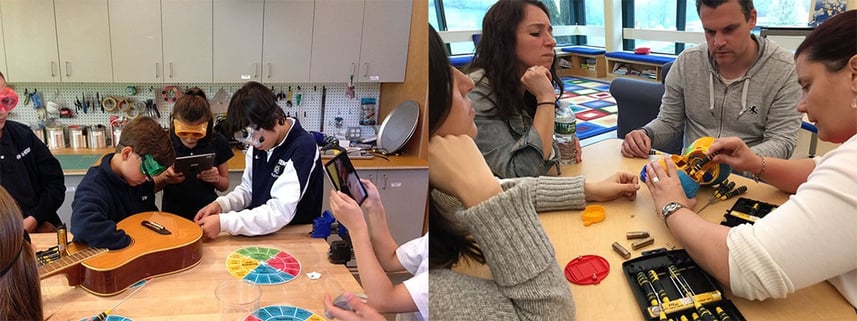Slowing down. That’s a hard concept to grasp here in our pocket of Connecticut and New York as directions on GoogleMaps usually show red, the speed limit on the Merritt Parkway is often disregarded (do you know it’s 55 mph?), some new restaurants are considered “fast casual," and journalism is simply becoming retweets and likes.
But what if we slowed down to take in the world around us? What if we strolled through our neighborhoods, biked through a different community, took time to bake a cake from scratch, looked at a single piece of art for 15 minutes or longer, or spent time looking closely at the parts and people involved in a system? Shari Tisham, a lecturer at Harvard Graduate School of Education and a Senior Research Associate at Project Zero (PZ), defines slow looking as “taking time to notice more than meets the eye at first glance.”
PZ is known, amongst other things, for creating thinking routines that are simple in structure, made up of a series of questions or a sequence of steps to follow to generate a routine of thinking. The routines are open-ended, allowing the individual learner to delve into their own thinking of a given concept or item.
The thinking routines listed below — created by one of Project Zero’s projects called Agency by Design — facilitate slow and close looking. At Whitby these routines have been employed to look at musical instruments in science, analyze various writing genres in English, and explore body systems in 4th grade to name a few. During a conference in Pittsburgh, I spent 30 minutes looking closely at a piece of art in the Carnegie Museum of Art using the Parts-Purposes-Complexities routine. When was the last time you spent 30 uninterrupted minutes looking at a piece of art?
These thinking routines slow down thinking and learning, while enriching both.
1. Parts, Purposes, Complexities (Looking Closely)
2. Parts, People, Interactions (Exploring Complexity)
3. Parts, Perspectives, Me (Exploring Complexity)
4. Think, Feel, Care (Exploring Complexity)
5. Imagine if… (Finding Opportunity)

An Example
A cohort of Whitby faculty worked through Parts-Purposes-Complexities by taking apart an analog alarm clock, finding the battery, gears, face, arms, and a number of other parts the names of which we didn’t know. We realized it’s not just a clock, but a system of many parts that work harmoniously together.
We then chose a system within which this thing (in our case, the alarm clock) resided. Time.
This time, we used the Parts-People-Interaction routine. Again, it’s not just time at Whitby, but a system of many parts (daily and yearly schedules, bus schedules, classroom space, field space, etc.), people (administrators, students, families, faculty, staff, faculty and staff family, bus drivers, caterers, weather, etc.), interactions between them, and other sub and super-systems (communication – parent/student information database, text messages, email, phone calls, meetings, face-to-face; transportation – Merritt Parkway, Interstate 95, Lake Avenue, family work and travel schedules, seasons, Greenwich Public School schedules, etc).
Certainly, in a world that has become increasingly divided, recognizing the interconnectedness of parts, people, and systems is a first step towards gulfing that divide.


